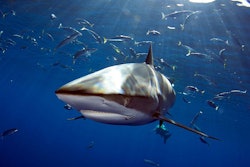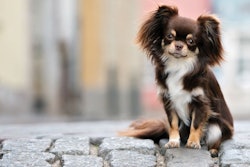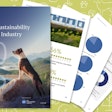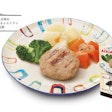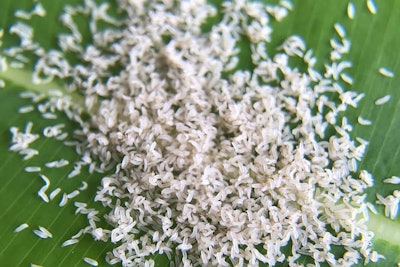
Insect-based pet foods may have followed a convoluted route to growth in Southeast Asia. European and United States marketers promote insects as safe food sources by citing traditional cultures’ use of insects in their cuisines. Anecdotes about grilled grubs bought in Bangkok may help market insect-based ingredients to Western audiences.
However, upper-class Southeast Asian households tend to avoid insects on their plates, said Leo Wein, founder and CEO of Protenga, a black soldier fly producer and processor. For example, consumption of insects is not part of an urban, affluent lifestyle in Singapore. Southeast Asian pet owners wouldn’t be influenced to accept insects in pet food by references to rustic insect street foods.
By analogy, in the U.S., intestines are generally considered a low value food. While tripe forms a part of traditional food cultures, especially in the rural Southern U.S., most people avoid eating digestive organs. Many of these organs then become byproducts, which some pet owners have come to reject. Singaporean yuppies may avoid eating crickets for the same reason New York yuppies eschew deep-fried chitlins (Foodie hipsters in Brooklyn not included).
Local traditional use couldn’t be used as a marketing tool for insect-based pet foods in Southeast Asia, Wein said. Instead, the promotion and development of insect-based pet foods in the U.S. and Europe became the reference for consumers in Asia. A major part of the cultural difference was also in the format the insects are presented in. While traditional human consumption often involved whole six-legged animals, Western-style entomophagy tends toward using processed ingredients made from insect proteins, oils and other constituents.
Protenga’s black soldier fly larvae are processed into its flagship products Hermet Protein, Hermet Oil, Hermet Frass and the YumGrubs pet food line. Protenga recently raised US$2 million in venture funding. In 2020, Protenga raised funds to build three facilities. Production reacted installed capacity in 2021. The recent investment will fuel the launch of YumGrubs. The funding will also help build a second facility focused on insect protein raw material production.
Protenga will release one YumGrubs premium wet dog food product this year. Wet dog food allows the black soldier fly larvae’s nutritional quality to shine at its best, Wein said. Protenga plans to expand into dry kibble and cat food. Protenga will distribute YumGrubs in Singapore and Malaysia at first, with the potential to expand regionally and to the U.S. and Europe. Furthermore, Protenga offers co-production services for other pet food brands around the world using its plant in Singapore.
Protenga will distribute YumGrubs in Singapore and Malaysia at first, with the potential to expand regionally and to the U.S. and Europe. Furthermore, Protenga offers co-production services for other pet food brands around the world using its plant in Singapore.
Insect protein sustainability and environmental impact
In Protenga’s facilities, the black soldier flies have lower food and water requirements than cows, chickens or other livestock. A higher volume of protein and oil can be raised on less land with insect compared to mammals or birds. For these reasons, insect-based ingredients may be an ecologically sustainable option. However, many pet foods are made with parts of those two-or-four-legged animals not eaten by humans. Comparing the ecological ramifications of cattle ranches to those of bug farms isn’t straightforward. Insects may need less water and feed to produce a certain quantity of protein than cows. Yet, if the nutritious but low-status parts of that cow, such as hearts, don’t go into pet food, those co-products drop in value and could go to waste. Scientists haven’t fully unraveled these protein sustainability paradoxes.
Boosted by their positioning as a sustainable, healthy pet food ingredient, insects continue growing in pet food popularity globally. Yet in 2021, when scientists reviewed peer-reviewed research on insect-based ingredients in dog and cat foods, they found only two studies have evaluated how insect-based dog foods effect the nutritional status and health of dogs and none on cats. The researchers published their scientific literature review in the Journal of Insects as Food and Feed.
As with sustainability, pet food marketing acclaims about insects as a natural part of dogs’ and cats’ ancestral diets may need to be tempered by evidence. While cats’ wild relatives do consumer insects, they made up less that 5% of their diets in biologists’ observations. Wolves did not eat enough insects to make a significant portion of their diets. While many pet owners have seen their dogs and cats eat a random housefly, that may not mean the mammals evolved to eat insects.
Limited research on insect-based pet food nutrition
Although many pet owners have anecdotal stories of dogs and cats eating insects, scientists haven’t fully studied the tiny animals’ nutritional and health effects on dogs and cats. However, basic analysis of many insects, such as black soldier fly larvae and crickets, suggest that the tiny animals are packed with proteins and other nutrients that dogs and cats can readily digest. For example, silkworms showed promise as dog food ingredients. Scientists in Thailand fed dogs a diet containing silkworm, house crickets or a control diet with poultry meal. The journal Animals published their research.
“All insects are generally good sources of protein, B-vitamins and trace minerals,” said pet nutrition consultant Mark Finke, Ph.D. in a video from Petfood Forum. “Much of it depends on exactly what they are to be used for (what is their primary role in a complete and balanced pet food). So black soldier fly larvae would be an excellent source of calcium as well, while crickets are relatively high in taurine. Note that some nutrients can easily be manipulated by diet so in some cases blanket statements should be made with great care.”
Insect-based pet foods are still in their early stages, perhaps more so than marketing might lead one to believe, Wein said. He sees tremendous room for insect-based pet foods and ingredients to expand as consumers increasingly demand sustainable, nutritious products. Insects meet many other trends driving consumer behaviors, beyond environment and health concerns. Protenga’s system fits well with the global drive by consumers to know their farmers and know their foods. An insect farm can encapsulate the entire rearing, harvesting and processing of the arthropods. This allows a high degree of transparency.
Insect-based pet foods and the ingredients that go into them may be on trend, but they still have a way to go before becoming mainstream.
Eventually, there will be a tipping point, when more people will have heard of insects in pet food than not, Weiss said. That point may be another half decade away, but cultural and economic forces seem to be encouraging further use of insect-based pet food ingredients.



